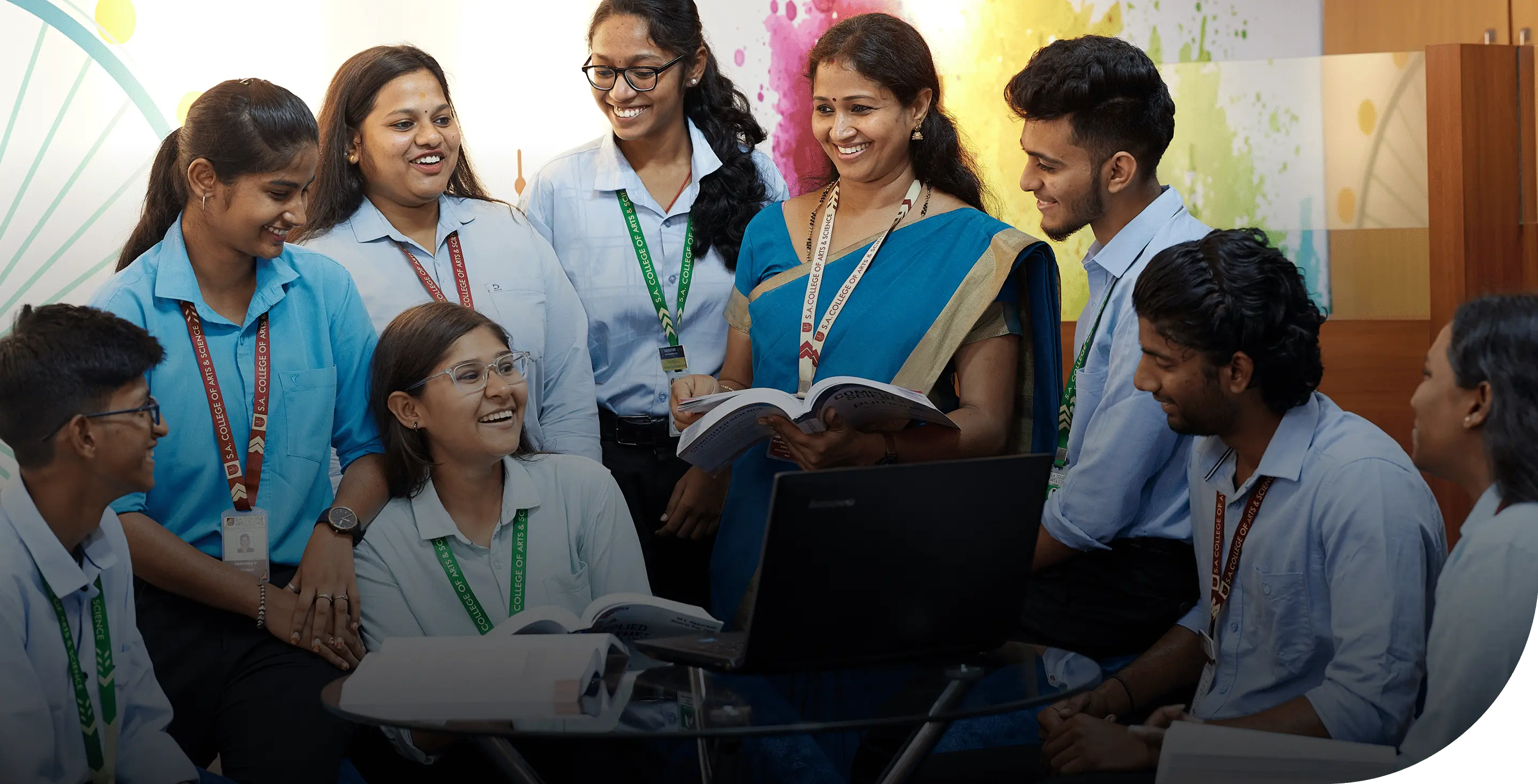
SACAS Events
Get all important updates, notices, and announcements in one place. Stay informed about events, academic schedules, deadlines, and other essential information to ensure you never miss out.
Department of Visual Communication Organized One-Day Workshop On “Documentary: An Introduction” on 18.09.2024
September 19, 2024
One-day Workshop report on Documentary: An Introduction
The session began at 9:30 AM with a Program overview by Mr. R D Balaji. He introduced Mr. Amshan Kumar as the guest speaker of the day. The topic of the session was Documentary: An Introduction. Mr. Amshan Kumar initiated the discussion by introducing early documentaries, specifically highlighting the pioneering works of the Lumière Brothers, who are credited with creating some of the first films ever shown. Mr. Amshan Kumar mentioned the first screening that took place in Paris in 1895, which featured iconic short films such as Arrival of the Train and Workers Leaving the Factory.
Mr. Amshan Kumar further engaged the students by dividing them into four groups. Each group was asked to spend five minutes discussing various aspects of documentaries. Following the discussions, representatives from each group came on stage to share their ideas on the subject, making the session interactive and thought-provoking.
Highlights of the Session
The Lumière Brothers’ Contributions: Mr. Amshan Kumar focused on the significance of the Lumière Brothers’ 72-minute short film, which is considered the earliest form of a documentary. He discussed their major works, such as Arrival of the Train and Workers Leaving the Factory, and how they laid the foundation for the documentary genre.
Evolution of Documentaries: He moved on to the history of silent films, mentioning Keechak Vatham, the first Tamil silent film, and Glass, the Oscar-winning short film from 1958. He also touched upon the transition to sound in 1927, which added a new dimension to the documentary medium.
Notable Filmmakers and Theories
Mr. Amshan Kumar explained how John Grierson defined documentaries as the “creative treatment of actuality.” He also discussed Dziga Vertov’s idea of “life caught unawares” and his famous documentary, The Man with the Movie Camera.
Robert Flaherty’s Nanook of the North was also cited as an example of an ethnographic documentary, specifically showcasing the seal-catching scenes.
Major Types of Documentaries:
Mr. Amshan Kumar categorized documentaries into various types:
Biographies
Art & Culture
Environment
Industrial films
Travelogues
Topical issues such as citizen rights, student struggles, and worker strikes
Ethnography
Documentary Production Process:
Mr. Amshan Kumar provided a comprehensive overview of the documentary production process, dividing it into three major phases:
Pre-Production:
Conceptualization, target audience, and subject access were discussed. Importance of budgeting, time management, research, and scriptwriting was emphasized.
The logistical aspects, including location fixing, transport, materials, visuals, and audio setup, were covered in detail. The importance of obtaining copyright permissions and planning the crew was highlighted.
Production:
The shooting phase was described in terms of camera positions, including handheld and tripod setups. Students were advised to stay alert to their subject and how to use single or multi-camera setups depending on the requirement. Techniques for shooting interviews, such as proper framing and lighting, were explained. The dual-camera setup for interviews was highlighted as a professional approach.
Post-Production:
Mr. Amshan Kumar outlined the process of editing, with special attention to shot selection, cutaways, and rewriting narrations if needed. The significance of sound editing, including the use of location sounds, buzz tracks, and music, was underscored.
The session concluded with a discussion on final edits, color correction, and the importance of crafting a cohesive narrative.
Distribution & Marketing:
The session also touched upon strategies for distributing documentaries:
- Screening in film festivals
- Television broadcasts
Independent filmmaking, with opportunities in pitching to broadcast channels and NGOs
Documenting social events like weddings and family functions was suggested as another career avenue.
Career Opportunities:
Mr. Amshan Kumar inspired the students by outlining various career opportunities in documentary filmmaking. He mentioned avenues in independent filmmaking, collaborations with NGOs, and broadcasting opportunities. Additionally, he explained how digital recording of events and functions could provide a viable career path for aspiring filmmakers.
Conclusion:
The session provided the students with a solid understanding of the evolution of documentaries, the production process, and career opportunities in this genre. The interactive elements, such as group discussions and presentations, made the session both engaging and informative. Mr. Amshan Kumar’s expertise in the field offered invaluable insights into the art and craft of documentary filmmaking.





